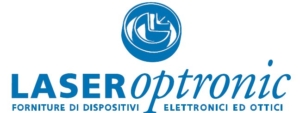X-ray Cooling in Industrial Scanners
Industrial X-ray systems, which can generate several kilowatts of heat during operation, require cooling of the anode to dissipate this heat for optimized performance and a longer operation life
Industrial X-ray systems, which can generate several kilowatts of heat during operation, require cooling of the anode to dissipate this heat for optimized performance and a longer operation life
Black body radiation is the emission of electromagnetic energy by an object which is in a thermodynamic equilibrium. The blackbody emits an amount of energy depends on its temperature, with ideal blackbody absorbing and re-emitting all the incident radiations it receives at any wavelength.
Thermal imaging cameras comprise a vitally important technological category within military avionics, but they can only be used properly if they are calibrated and tested before being deployed. One of the simplest ways to carry out infrared measurement within the confines of electro-optical test systems is to use specially developed targets.
Testing the performance of imaging systems such as forward looking infrared radiometers (FLIR) is a vital task in the field of avionics, whether we’re talking about military or any other aircraft. The best way to examine the function of an imaging system is to use a systematized approach.
Before digging deep into the recent trends, it is important to understand the basic premise of spectroradiometers. In simple words, it is a device used to measure certain spectral values such as luminance, irradiance, chromaticity, and radiant intensity in different sources of light
With the coronavirus pandemic still raging around the world, the mandate is clear: follow the necessary protocols and focus on prevention than cure. For customer-facing businesses/organizations, this involves body temperature screening, spatial distancing, activating heightened hygiene measures, and setting up a Covid-19 responder. While most of these are fairly manageable, the body temperature part can get tricky.
The sky is a large blackbody radiation source. The emitted sky radiation covers all electromagnetic spectrum including the absorption wavelengths of a R-134a gas. The above infrared picture shows an image of a cloud. It can be a dust cloud that reflects the sky radiation or a target gas. CI Systems’ spectral gas imagers can reveal the answer in seconds, without any prior knowledge. In this case it was a R-134a gas. CI Systems’ spectral gas imagers are designed to identify target gas clouds. The explanation below describes the main difference between a FLIR camera and CI Systems’ gas imager.
IceFyre 50 W UV picosecond laser cuts flexible OLED materials with exceptional speed and quality.
Prior of selecting a passive stand-off spectral imager for hazardous gas applications one has to ascertain that there is a good match between the measuring system’s performance and the parameters of the specific application which the system will be used for.
What started as an experiment to aid in firefighting and the military in the 1970s has today become an integral part of non-destructive testing procedures. From power distribution systems to facility management, thermal imaging testing, with the help of modern low-cost infrared cameras, is saving the world in every imaginable field of engineering by detecting issues and helping in suppressing their impact right at the start
Laser Optronic S.r.l.
Via B. Quaranta, 57
20139 Milano – IT
P.I. 06109950151
Codice SDI KRRH6B9
Tel: +39 02 574651
Info commerciali o generiche: lop@laseroptronic.it
Amministrazione: amministrazione@laseroptronic.it
Ufficio di Roma
Via N. Tommaseo, 3
00063 Campagnano di Roma (RM) – IT
P.I. 06109950151
Codice SDI KRRH6B9
Tel: +39 06 9041786
Info commerciali o generiche: lop@laseroptronic.it
Amministrazione: amministrazione@laseroptronic.it
![]()
Organizzazione con sistema per la qualità certificato da Dasa-Rägister S.p.A. in conformità alla UNI EN ISO 9001:2015 IQ-0223-04
Iscrizione RAEE IT24120000016709
